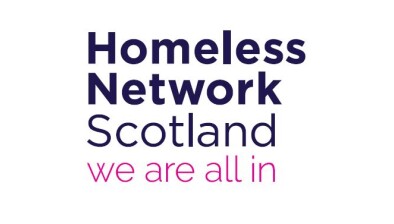Blog: Homelessness and ‘Housing First’ in Scotland
 With homelessness moving towards the frontline of Scottish politics, Adam Lang says delivering a ‘Housing First’ model needs sustained support as part of a whole system response and should not be mistaken for a silver bullet.
With homelessness moving towards the frontline of Scottish politics, Adam Lang says delivering a ‘Housing First’ model needs sustained support as part of a whole system response and should not be mistaken for a silver bullet.
The recently published Programme for Government outlined a pledge to renewed leadership, vision and national coordination to tackle homelessness in Scotland.
This is a very welcome commitment and something that Shelter Scotland’s Homelessness: Far From Fixed campaign had been explicitly calling for. In recent months, we have started to see much more focussed national debate about the challenges of meaningfully and sustainably tackling homelessness in Scotland.
One notable aspect of this debate has been the prominent focus on a response to homelessness known as “Housing First”.
Housing First flips the traditional response to homelessness on its head and prioritises the right to a home above the obligation to engage with housing support services or transitional housing arrangements first. The Housing First model was designed to meet the specific needs of homeless individuals with often complex and interconnected support needs. Rather than the focus being placed on ensuring someone is “tenancy ready” before giving them a permanent home, Housing First advocates giving someone a permanent, main-stream home first and then building the support around them to ensure they are best placed to keep it.
This makes a lot of sense. If you are facing multiple challenges in your life, ensuring you have a stable home as a foundation for moving on from these challenges should be a no brainer.
There is much in the Housing First model that is to be welcomed and should be championed. It ideologically aligns with Shelter Scotland’s driving mission of a home for everyone. It supports the core recommendations from the 2015 Commission on Housing & Wellbeing that noted the vital importance of a safe and secure home to act as a foundation for individual and collective community wellbeing. It is backed by a robust growing body of international evidence of its effectiveness and, bluntly, it just makes sense.
Shelter Scotland already delivers a range of housing support services across the country and some of these incorporate and seek to replicate elements of the Housing First approach, notably in our families work in partnership with South Lanarkshire Council.
But in Scotland, not everyone that is homeless falls into this category of having multiple and complex needs or is (as it is sometimes described) defined as being “multiple exclusion homeless”.
Last year there were over 28,000 official homelessness assessments and of these 4,335 could be attributed as coming from people with multiple and complex needs. While detailed statistical evidence here is tricky, due the way the numbers are collated nationally, this includes people who gave more than one of the following as reasons for losing their tenancy: substance misuse, mental health problems, having been part of the criminal justice system or that they had slept rough at least once in the 3 months prior to making a homeless application.
For the majority of people who find themselves homeless in Scotland, the real barrier to solving their housing crisis is not whether or not they engage with support services, but whether there is good quality temporary accommodation and then a suitable and affordable permanent home for them to move into.
Housing First is essentially a simple concept, but it requires a complex delivery model and sustained political and financial support to make it a success. The risk here is that while it sounds good as a political soundbite and policy position, it is not in and of itself a whole system response to homelessness.
On paper, Scotland has a very strong housing safety net and some of the best rights and protections for homeless people in the world. But turning good legal rights into a positive system for those experiencing homelessness is difficult. It requires a sustained commitment to get a whole range of different and complex, interconnected moving parts to work together effectively to prevent and tackle homelessness.
As a model that has a strong evidence base of effectively supporting people with multiple and complex needs, Housing First has an important role to play as part of this, particularly when viewed through the prism of preventative spend, but it is not the whole story.
Some people will still require and want temporary accommodation, which has major challenges looming with regards to how it is funded and currently no formal guidance on quality standards. Local authority budgets are under major pressures to deliver the right quality and level of intensity required to best support those with complex needs. Too many young people and care leavers are transitioning out of one stage of their lives and falling into homelessness. Prison leavers and hospital leavers are vastly over represented in homelessness numbers as they are too often released from care with no appropriate housing in place. And here at Shelter Scotland, we are increasingly concerned that a growing number of people are not getting any access at all to their housing rights in a system that is increasingly having to limit scarce housing and support resources.
Meaningfully tackling homelessness in Scotland requires a coordinated and strategic approach to ensure numerous public services interact more effectively together. It is about more than just Housing First and we must ensure that this welcome moment in time to debate these issues in Holyrood and in local government chambers across the country, does justice to these complexities, these challenges and the full range of interconnected issues.
There is a place for specialist models such as Housing First as a central part of an effective response to homelessness. But, if we truly want to transform the homelessness system in Scotland, we need a strong and sustained supply of good quality affordable homes and better joined -up working across our public services. Without this, the challenges of responding to homelessness at scale will always come back to the need to ration a scarce resource.









